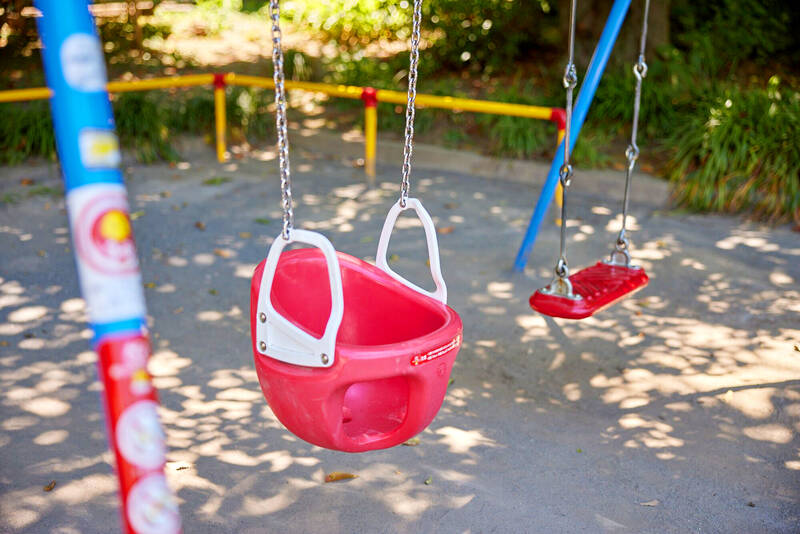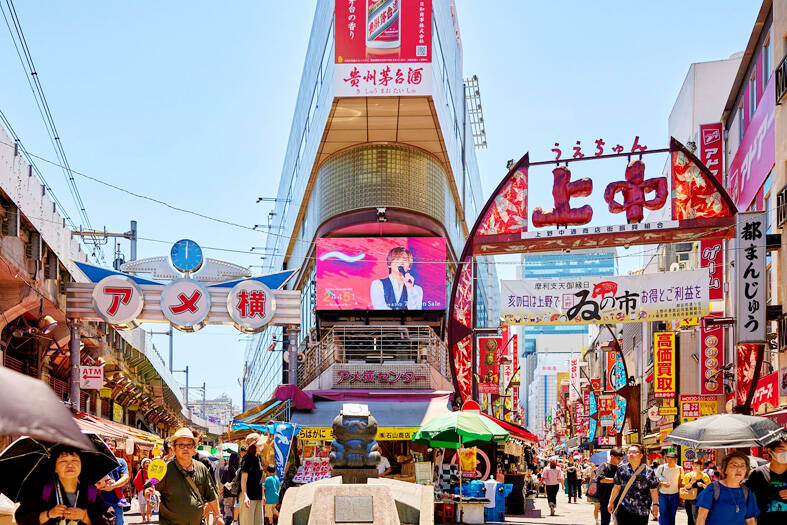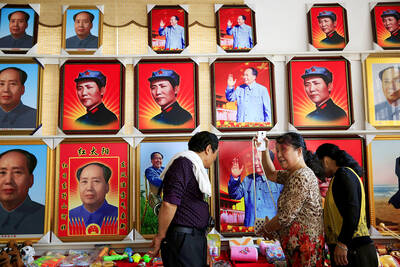Murumuru spends his weekends toiling on building sites in Japan in the sticky heat of summer to supplement the income from his other job at a bakery. A certified IT specialist, he arrived in Tokyo from Sri Lanka a year ago, hoping to take advantage of job opportunities that have opened up as part of Japan’s efforts to tackle its population crisis and encourage more immigration.
But Murumuru, a nickname given to him by his Japanese colleagues, has found it hard. Despite staff shortages, both he and his wife, a qualified physiotherapist, have found the language barrier an obstacle.
“All of the hospitals ask for N1, as do many IT jobs,” he explains, referring to the highest-level Japanese test for foreigners, requiring the ability to read around 2,000 kanji characters.

Photo: Bloomberg
Despite initial plans to stay for five years, the couple are considering a move elsewhere, perhaps to the UK. They have relatives there and believe his wife could find work in the National Health Service.
With the population expected to decline dramatically in the coming decades — leaving a gaping hole in the workforce — Japan is quietly easing restrictions and accepting record numbers of migrants, mostly from Asian countries such as Vietnam, China, Indonesia and the Philippines. Data released in July showed a record population fall of nearly 800,000 but it also revealed a jump in overseas-born residents, to an all-time high of around 3 million, almost 50 percent up on a decade ago.
The shift provides a welcome boost to the size of its working-age population but requires authorities to negotiate Japan’s complex relationship with “outside people.” Meanwhile, new arrivals often have to navigate rigorous language requirements for jobs that pay less than in comparable countries.

Photo: Bloomberg
ONCE PAID TO LEAVE
Bringing skilled workers from overseas is requiring a significant shift in a nation that not so long ago treated foreign labor as something akin to a necessary, if temporary, nuisance.
The treatment of Japanese-Brazilians who came in the 1990s to work in the factories of Japan is a case in point. The importance placed on bloodlines meant the Brazilian descendants of Japanese emigrants were given priority over other foreign workers in being offered visas.
However, it became clear that most of the new arrivals didn’t speak Japanese and were culturally Brazilian. When the 2008 global financial crisis forced firms to lay off workers, the Japanese government offered them US$3,000 each to go home and not come back.
Japan’s ethnic Korean population has a much longer history, and one that speaks to the challenges in welcoming migration. During the occupation of the Korean Peninsula from 1910 to 1945, thousands of Koreans were forced to work in Japan.
More than 400,000 of their descendants remain, given special residence status but neither Japanese nationality nor the right to vote. Kwang Park, a Tokyo-born descendant, says his identity feels “neutral,” somewhere in-between the two nationalities.
Park remembers encountering discrimination in his early years at school, but said that things had changed by the time his youngest brother went to school seven years later.
“Now I work at a global company, so of course there are foreigners and my background isn’t an issue. I don’t know if the situation would be different were I at a Japanese firm,” he says.
Despite the demographic challenges, Japan has remained reluctant to accept refugees and the number of applicants it grants asylum to annually rarely exceeds double digits. The warm welcome rolled out to around 2,500 Ukrainians since the war began appears at first glance to be a striking exception to decades of policy.
Mariko Ukiyo is a counsellor who runs the Shibuya Himawari center in Tokyo providing support for around 1,500 Ukrainian refugees fleeing the war.
“There is a lot of goodwill towards Ukrainian evacuees because people feel sympathy for their situation and understand their country has been invaded by Russia,” she says.
However, Ukiyo acknowledges that their designation as evacuees, and the understanding that they will return to Ukraine after hostilities end, is a major factor in the positive treatment.
WILL IT BE ENOUGH?
Easing immigration restrictions, such as visa exemptions and expanding the definition of a skilled worker, is a key part of Japan’s efforts to, as prime minister Fumio Kishida put it, “continue to function as a society” but one question remains: will Japan be able to attract enough people?
Park believes it will be hard for Japan to lure large numbers of skilled workers due to language difficulties, dealing with the complexities of Japanese culture and uncompetitive wages in many sectors.
Naohiro Yashiro, dean at the faculty of global business at Showa Women’s University in Tokyo, agrees, saying he believes Japan needs to realize it is “in competition with other countries for the best workers,” and that “the government should persuade the public that accepting immigrants is good for Japan.”
For these reasons, Yashiro dismisses as “nonsense” the projections from the National Institute of Population and Social Security Research that by 2070 more than 10 percent of the total population of Japan, or 9.4 million, will be from overseas (the total population is forecast to fall to 87 million at that point, from the current 125 million).
Yashiro noted that while the government had expanded the definition of skilled immigrant workers, which previously applied mainly to graduates, to include skilled blue-collar workers, the Japanese language requirement had been raised, “a kind of restriction.”
One of the major benefits of more immigration is an increase in competition in the labor market, says Yashiro. With unemployment hovering around 2.5 percent and vacancies often exceeding candidates, the job market is not exactly cut-throat, he says, something that also reduces the probability of resentment against newly arrived workers.
But amid all the questions and difficulties, there are positive signs of a shift.
Park has never seriously considered giving up his Korean passport, but his daughter will have to choose her nationality once she reaches 20, assuming the present laws remain. “We live here and speak Japanese, so I’m fine if she chooses Japan,” he says.
Despite the challenges, Murumuru says there is plenty to like about his current home in Tokyo.
“I really like Japan. I feel no racism from 99 percent of people here,” he says, adding, “People respect each other, whether they do white-collar or blue-collar jobs.”

Taiwan can often feel woefully behind on global trends, from fashion to food, and influences can sometimes feel like the last on the metaphorical bandwagon. In the West, suddenly every burger is being smashed and honey has become “hot” and we’re all drinking orange wine. But it took a good while for a smash burger in Taipei to come across my radar. For the uninitiated, a smash burger is, well, a normal burger patty but smashed flat. Originally, I didn’t understand. Surely the best part of a burger is the thick patty with all the juiciness of the beef, the

This year’s Miss Universe in Thailand has been marred by ugly drama, with allegations of an insult to a beauty queen’s intellect, a walkout by pageant contestants and a tearful tantrum by the host. More than 120 women from across the world have gathered in Thailand, vying to be crowned Miss Universe in a contest considered one of the “big four” of global beauty pageants. But the runup has been dominated by the off-stage antics of the coiffed contestants and their Thai hosts, escalating into a feminist firestorm drawing the attention of Mexico’s president. On Tuesday, Mexican delegate Fatima Bosch staged a

The ultimate goal of the Chinese Communist Party (CCP) is the total and overwhelming domination of everything within the sphere of what it considers China and deems as theirs. All decision-making by the CCP must be understood through that lens. Any decision made is to entrench — or ideally expand that power. They are fiercely hostile to anything that weakens or compromises their control of “China.” By design, they will stop at nothing to ensure that there is no distinction between the CCP and the Chinese nation, people, culture, civilization, religion, economy, property, military or government — they are all subsidiary

Would you eat lab-grown chocolate? I requested a sample from California Cultured, a Sacramento-based company. Its chocolate, not yet commercially available, is made with techniques that have previously been used to synthesize other bioactive products like certain plant-derived pharmaceuticals for commercial sale. A few days later, it arrives. The morsel, barely bigger than a coffee bean, is supposed to be the flavor equivalent of a 70 percent to 80 percent dark chocolate. I tear open its sealed packet and a chocolatey aroma escapes — so far, so good. I pop it in my mouth. Slightly waxy and distinctly bitter, it boasts those bright,